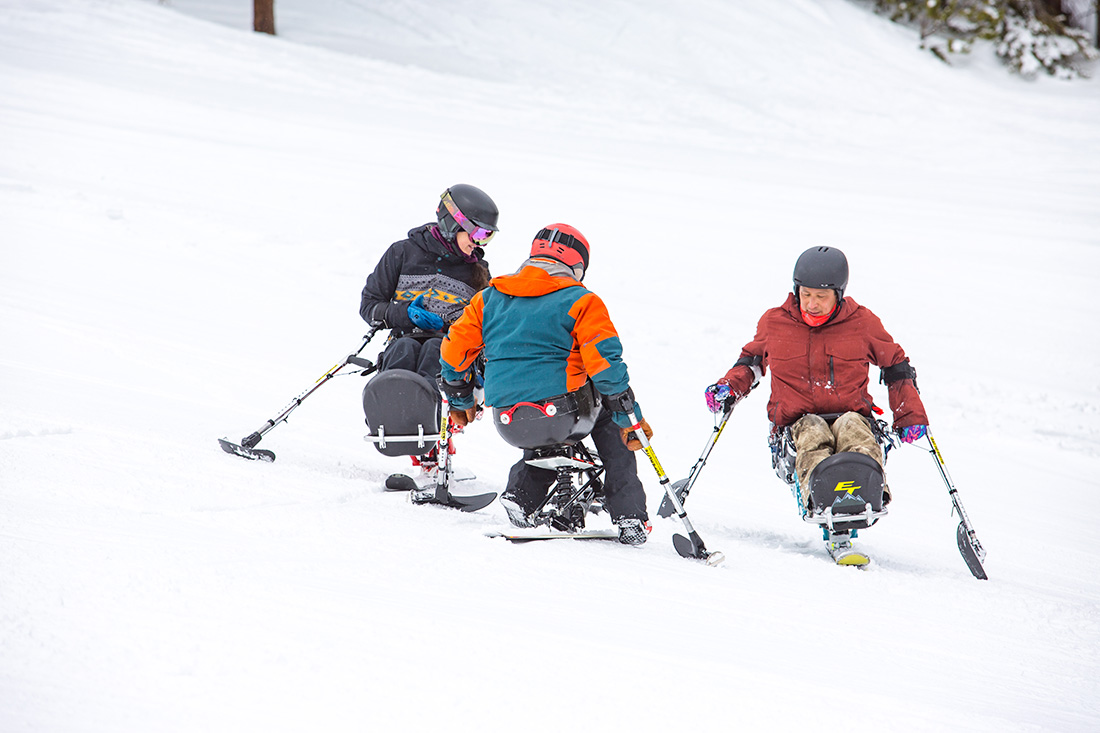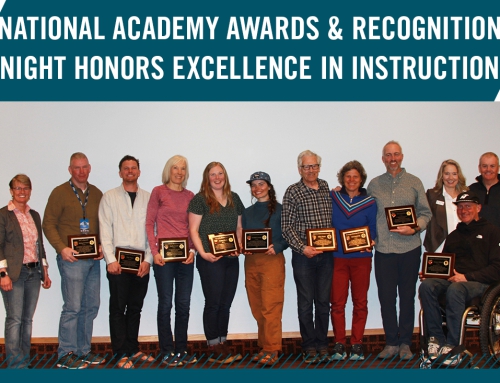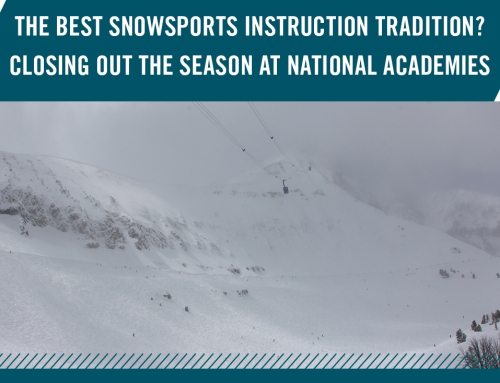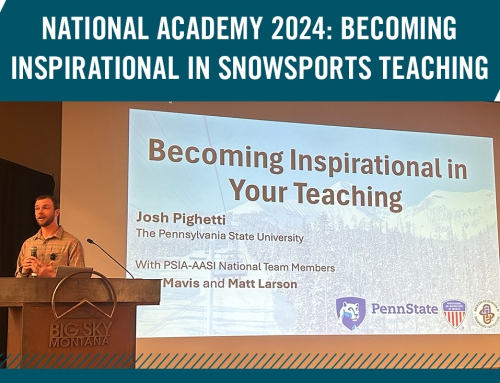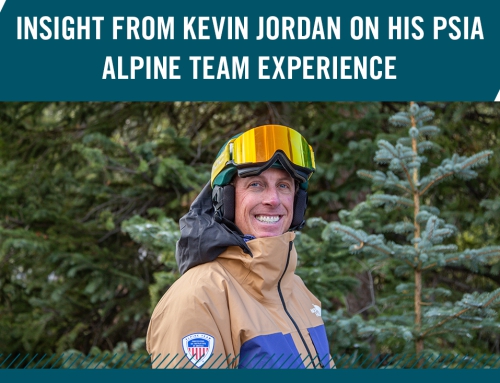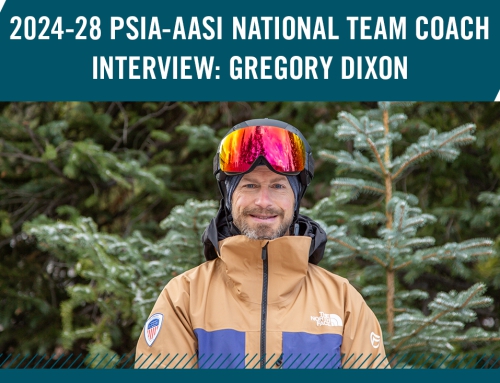32 Degrees: The Hero’s Journey, A New Way to Think About Teaching
PSIA-AASI Adaptive Team member Mike Ma shares how Hollywood may help us all teach better lessons. This article appears in the Fall 2021 Issue of 32 Degrees; for other great stories you can read the full issue online.
Teaching an adaptive lesson is often very rewarding but it can also be daunting. The trials your student faced to get to the hill likely started days, months, perhaps even years before you meet them. Additionally, it’s common to feel pressure to deliver a life-changing lesson to your student – to provide a lesson that gives them a new sense of independence or confidence. Sometimes, you’re able to achieve that, but not always.
The time you have to work with your student is limited, so how can you deliver an effective lesson that takes into account your student’s story before, and after, the lesson? How can you build a lesson that inspires?
Hollywood may have an answer: Make your lesson a Hero’s Journey.
Professor of literature Joseph Campbell, who popularized the notion of “The Hero’s Journey,” claims in Hero with a Thousand Faces that most hero stories follow a similar arc in nearly all reaches of geography, culture, and history. The Hero’s Journey, or monomyth, is an effective narrative pattern.
From films like Star Wars to series like The Queen’s Gambit (warning: spoilers ahead), storytellers have used a common framework to create deep, emotional connections by breaking a Hero’s Journey into three stages:
Departure
The hero answers a call to adventure and leaves their ordinary world. The hero leaves their familiar world to learn, to answer a question, or to solve a problem. Often, the hero refuses the initial call to adventure. For instance, Luke Skywalker is called to Alderann but initially refuses, and Elizabeth Harmon wants to play chess, but has to overcome barriers to play the game.
Initiation
The hero adventures into a new world. The hero is met with challenges and trials – that often escalate to an ordeal – but overcomes these obstacles and gains new understanding. Think of Luke defeating Vader or Elizabeth’s training-trip escapades from Kentucky to Paris and finally beating Borgov in Moscow.
Return
The hero comes home a changed person. The hero returns home with a new understanding of the world and their abilities to effect change – they return a master of two worlds as they now have a new skillset. Luke dies the greatest Jedi who ever lived, and after dramatically winning the prestigious final tournament, Elizabeth’s final scene returns her to her roots – playing a game of street chess with locals.
So, how can we help our students follow the Hero’s Journey? By building deeper connections with our students to create lifelong learners. If we compare the PSIA-AASI Teaching/Learning Cycle against to the Hero’s Journey, the combination may look like this:
The journey of personal discovery offers a longer view of what happens before and after the lesson and some suggestions for setting up an adaptive program in the middle.
Here are some possible ways to blend these ideas together:
| Stage | Insight | Sample Exercise |
|---|---|---|
| Departure | The lesson began days, months, or perhaps years before you meet your student. | Best Thing/Worst Thing – Ask your student, “What’s the best thing and the worst thing that can happen today?” With this, you may understand their call to adventure and refusal of the call to set some empathy-based expectations for the day. |
| Initiation | Lessons are a learning experience, and often filled with challenges and trials. Sometimes you will notice the lesson escalates to an ordeal, but with patience and determination your student will learn and grow through the processes. | Win the Ordeal – After covering the easier tasks in your program,
challenge your students with a culminating task just one degree beyond their incoming expectations. Some ideas may include getting them on the chairlift, traversing a small bump field, running racing gates, or riding their first fun box. Help show them they are a “Master of Two Worlds” – before and after the lesson. |
| Return | Show your student what they have learned to help them understand the skills they acquired – they are a master of two worlds, having grown through the lesson and gained new understanding. | Give Their Old Move Back – If you taught a new, corrective movement, try to find a way to blend an improved
version of their old move with their new move so they can master the skill. For example, I once taught a backfoot snowboard kick turner how to turn with twist. Toward the end of our lesson, I “returned” his rotational move, and challenged him to blend it with his new twist move for flat 360s. |
Building Stories into Lessons
Literature and movies show there is a regular heartbeat to stories that move us as human beings. The closer that we can make our lessons match that heartbeat, the more success we can have building even deeper connections to our students and spread the love of snowsports.

